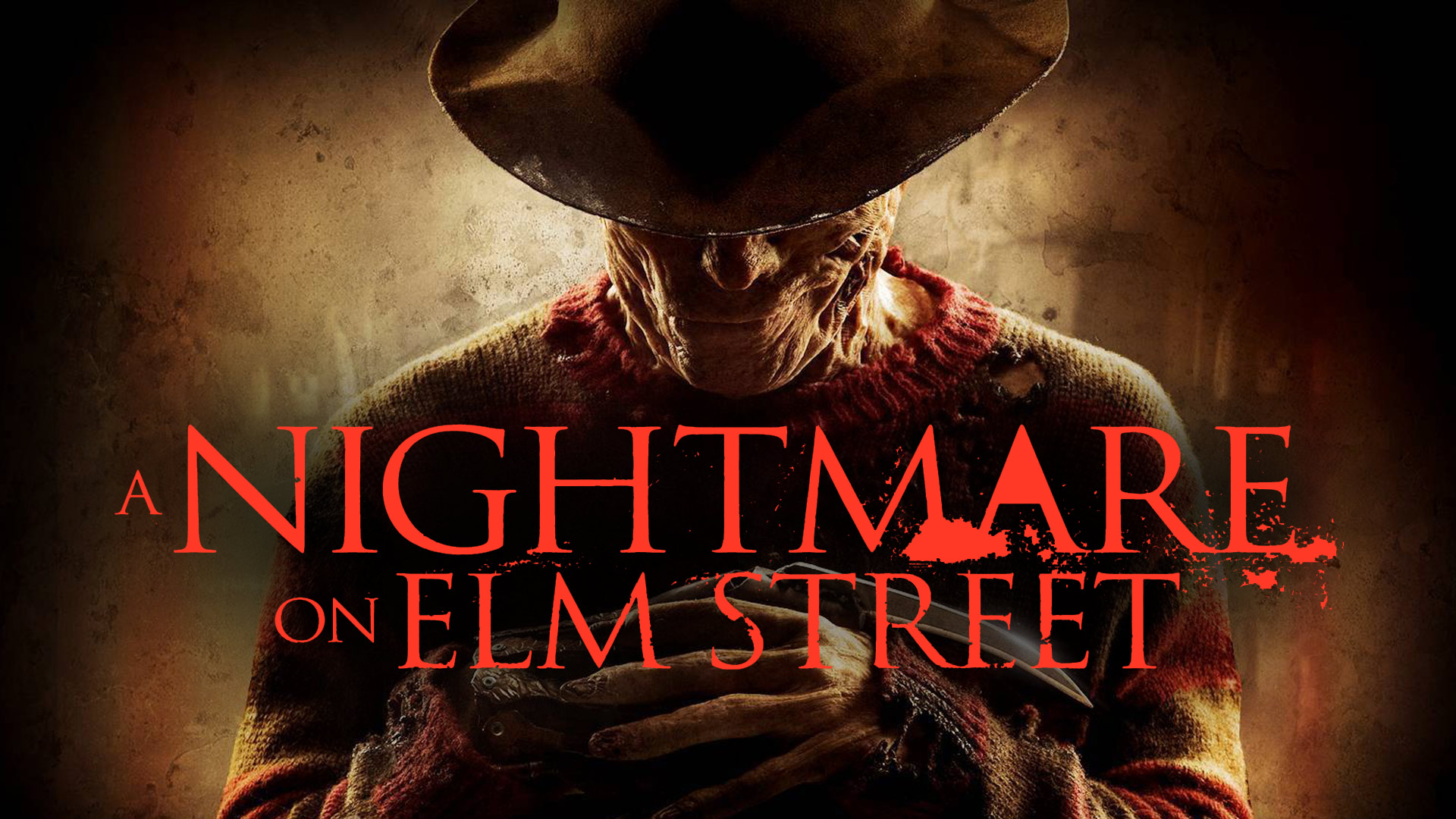
A Nightmare on Elm Street is a classic horror movie that has captivated audiences since its release in 1984. Directed by Wes Craven, this spine-chilling film has become a staple in the genre and has spawned numerous sequels, reboots, and even a crossover film with the Friday the 13th franchise.
In this article, we will delve into the world of A Nightmare on Elm Street and uncover 40 fascinating facts about the movie that you may not have known. From behind-the-scenes secrets to trivia about its iconic villain, Freddy Krueger, get ready to dive deep into the dark and twisted imagination of Wes Craven.
Key Takeaways:
- A Nightmare on Elm Street introduced Freddy Krueger, a haunting villain with a terrifying backstory, and innovative filmmaking techniques that left a lasting impact on the horror genre.
- The movie’s success led to a global phenomenon, inspiring a dedicated fan community, a TV show adaptation, and a legacy of scares that continue to haunt horror fans worldwide.
The Birth of a Nightmare
A Nightmare on Elm Street was released in 1984, directed by Wes Craven and produced by Robert Shaye. It marked the birth of a horror franchise that would leave an indelible mark on popular culture.
The Haunting Villain
The iconic character of Freddy Krueger was played by actor Robert Englund. With his burned face, striped sweater, and razor-sharp glove, Freddy became one of the most memorable horror villains of all time.
A Terrifying Backstory
Freddy Krueger’s backstory, revealed through the film, tells the tale of a child murderer who was burned alive by vengeful parents. This dark history forms the basis of his haunting presence in the dreams of Elm Street’s teenagers.
A Nightmare on Elm Street: Influential and innovative
The movie introduced innovative filmmaking techniques, like surreal dream sequences and a blurring of the line between reality and nightmare. Its impact on the horror genre cannot be overstated.
The Infamous Glove
Freddy Krueger’s iconic glove with razor-sharp blades was constructed by special effects artist Jim Doyle. The glove became a symbol of the franchise and a recognizable image in popular culture.
Johnny Depp’s Acting Debut
A Nightmare on Elm Street marked Johnny Depp’s acting debut. He played the role of Glen Lantz, one of the teenage victims of Freddy Krueger. This film launched Depp’s successful acting career.
The Upside-Down Room
One of the most memorable scenes in the movie involves Nancy, the main protagonist, being attacked by Freddy Krueger in a room that defies gravity. The room was actually built on a rotating set to achieve the mind-bending effect.
A Low Budget Success
Despite its modest budget, A Nightmare on Elm Street became a huge success, grossing over $25 million in the United States alone. Its popularity led to multiple sequels and a long-lasting franchise.
The Fear of Falling Asleep
The central premise of the movie revolves around the fear of falling asleep and the terrifying events that occur in the dream world. This concept taps into a primal fear that resonates with audiences.
A Nightmare on Elm Street: Critical Acclaim
The film received positive reviews from critics, praising its originality and suspenseful storytelling. It is often regarded as one of the best horror movies ever made.
The Evolution of Freddy Krueger
Throughout the franchise, Freddy Krueger’s character underwent various changes, from a menacing figure to a more comedic and self-aware villain. This evolution showcased the versatility of the character.
The Power of Dreams
A Nightmare on Elm Street explores the power of dreams and the consequences of unresolved trauma. It delves into the subconscious mind and blurs the line between fantasy and reality.
Scream Queen Heather Langenkamp
Actress Heather Langenkamp played the role of Nancy Thompson, the resourceful protagonist who battles Freddy Krueger. Her portrayal made her a beloved figure in the horror genre.
A Nightmare Created on Elm Street
The idea for the movie came to Wes Craven after reading a series of articles about mysterious deaths occurring among young people who claimed to have been terrorized by nightmares.
The Mysterious Nursery Rhyme
The movie introduced a haunting nursery rhyme that became synonymous with Freddy Krueger. “One, two, Freddy’s coming for you, three, four, better lock your door…” This chant added to the suspense and fear associated with the character.
The Elm Street House
The movie featured a house on Elm Street which served as a central location for the haunting nightmares. The house became an iconic image in the franchise and remains a symbol of fear.
Introducing the Final Girl Trope
A Nightmare on Elm Street popularized the “Final Girl” trope in horror movies. Nancy, the strong-willed and resourceful protagonist, fights against all odds to survive Freddy Krueger’s torment.
The Legacy of Wes Craven
Wes Craven, the director and writer of A Nightmare on Elm Street, left an enduring mark on the horror genre. His innovative storytelling and iconic characters influenced countless filmmakers.
Freddy Krueger’s Cultural Impact
Freddy Krueger has become a cultural icon, inspiring numerous Halloween costumes, parodies, and references in popular media. His distinctive look and menacing demeanor are instantly recognizable.
The Nightmare on Elm Street Theme
The film featured a haunting and memorable theme composed by Charles Bernstein. The atmospheric music added to the tension and unease felt throughout the movie.
A Dream-Like Visual Style
The movie’s dream sequences were shot with a surreal and stylized visual style, often using distorted imagery and unconventional camera angles. This further enhanced the psychological horror.
The Infamous Bathtub Scene
One of the most memorable scenes in the movie involves Nancy taking a relaxing bath, only to find herself pulled underwater by Freddy Krueger. This scene has become an iconic moment in horror cinema.
The Freddy Krueger Makeup Process
The makeup process to transform Robert Englund into Freddy Krueger took hours each day. The prosthetics and burns were meticulously applied to create the burned and scarred look.
A Nightmare on Elm Street: A Global Phenomenon
The movie’s success wasn’t limited to the United States. It gained international acclaim and became a global phenomenon, solidifying Freddy Krueger’s status as a horror icon.
The Alternate Ending
Originally, the film had a darker and more ambiguous ending, leaving Nancy’s fate uncertain. However, a more conclusive ending was added to set up potential sequels.
The Power of Fear
A Nightmare on Elm Street taps into universal fears and explores the vulnerability of sleep. It capitalizes on the fear of the unknown and the ability of nightmares to haunt our waking lives.
The TV Show Adaptation
The success of the movie led to a television series adaptation titled “Freddy’s Nightmares: A Nightmare on Elm Street: The Series.” The show explored various horror stories tied to Freddy Krueger.
The Freddy Krueger Documentary
In 2010, a documentary titled “Never Sleep Again: The Elm Street Legacy” was released, chronicling the making of the entire Nightmare on Elm Street franchise. It provided fans with in-depth insights and behind-the-scenes footage.
The Legacy Lives On
A Nightmare on Elm Street continues to influence the horror genre to this day. Its impact can be seen in films like “Scream” and “It Follows,” which draw inspiration from its innovative storytelling.
The Nightmare Resurgence
In 2010, a remake of A Nightmare on Elm Street was released, introducing a new generation of moviegoers to Freddy Krueger’s nightmares. While not as well-received as the original, it continued to keep the franchise alive.
The Elm Street House as a Tourist Attraction
The real-life house used as the Elm Street house in the movie became a popular tourist attraction, with fans of the franchise making pilgrimages to see the iconic location.
The Frequent Use of Practical Effects
A Nightmare on Elm Street relied heavily on practical effects to bring illusions and nightmares to life. This added a level of authenticity and visceral horror to the film.
The Influence of German Expressionism
Wes Craven drew inspiration from the German expressionist movement, which featured distorted sets and an emphasis on psychological unease. This influence can be seen in the dream sequences of the movie.
The Nightmare on Elm Street Comic Books
To further expand the franchise, comic books based on A Nightmare on Elm Street were released, featuring original stories and diving deeper into Freddy Krueger’s terrifying world.
The Crossover with Friday the 13th
In 2003, Freddy Krueger crossed paths with another famous horror villain, Jason Voorhees, in the crossover film “Freddy vs. Jason.” This highly anticipated clash thrilled fans of both franchises.
The Cultural Critique
A Nightmare on Elm Street can be seen as a cultural critique, exploring themes of parental neglect, societal fears, and the consequences of unresolved trauma. It goes beyond typical horror tropes to delve into deeper social issues.
The Nightmare on Elm Street Remake
In addition to the 2010 remake, a new reboot of A Nightmare on Elm Street is currently in development, promising to bring Freddy Krueger back to the big screen for a new generation.
The Legacy of Scares
A Nightmare on Elm Street has left a lasting legacy of scares and nightmares in the minds of horror fans worldwide. Its inventive storytelling and iconic villain continue to haunt our dreams.
The Global Fan Community
The Nightmare on Elm Street franchise has a dedicated and passionate fan community that continues to celebrate and discuss the movies, share fan art, and attend conventions dedicated to the series.
The Nightmare on Elm Street Marathon
For avid fans and horror enthusiasts, organizing a Nightmare on Elm Street movie marathon is a popular way to relive the fear and excitement of the franchise. Grab some popcorn, turn off the lights, and prepare for a night of unforgettable nightmares.
These 40 facts about the movie A Nightmare on Elm Street highlight the enduring impact and cultural significance of this horror masterpiece. From the birth of Freddy Krueger to the innovative storytelling techniques, A Nightmare on Elm Street has left an indelible mark on the horror genre and continues to haunt our dreams to this day. So, next time you find yourself unable to sleep, remember the chilling nursery rhyme and beware of what lurks in the darkest corners of your mind.
Conclusion
In conclusion, A Nightmare on Elm Street remains an iconic horror movie that has left a lasting impact on the genre. With its unique storyline, terrifying antagonist, and groundbreaking special effects, it continues to captivate audiences decades after its initial release. The film’s success spawned a franchise and cemented Freddy Krueger as one of the most recognizable and feared villains in cinematic history. Whether you’re a horror fan or not, A Nightmare on Elm Street is a must-watch for anyone looking for a thrilling and chilling movie experience.
FAQs
1. Who directed A Nightmare on Elm Street?
Wes Craven directed A Nightmare on Elm Street.
2. When was A Nightmare on Elm Street released?
A Nightmare on Elm Street was released on November 16, 1984.
3. Is A Nightmare on Elm Street based on a true story?
No, A Nightmare on Elm Street is not based on a true story. It is a work of fiction.
4. Who plays the iconic character Freddy Krueger?
Robert Englund portrays the infamous Freddy Krueger in A Nightmare on Elm Street.
5. How many sequels are there to A Nightmare on Elm Street?
There are a total of nine sequels in the A Nightmare on Elm Street franchise.
6. Is A Nightmare on Elm Street suitable for all ages?
A Nightmare on Elm Street is rated R and contains intense violence and horror, making it appropriate for mature audiences only.
7. What is the plot of A Nightmare on Elm Street?
The plot of A Nightmare on Elm Street revolves around a group of teenagers who are haunted and killed in their dreams by Freddy Krueger, a vengeful spirit.
8. What is the significance of the character Freddy Krueger’s glove?
Freddy Krueger’s glove, adorned with razor-sharp blades, has become an iconic symbol of the movie and is a weapon he uses to terrorize his victims.
9. How did A Nightmare on Elm Street impact the horror genre?
A Nightmare on Elm Street brought a fresh and innovative approach to the horror genre, combining elements of slasher films with supernatural elements, and became a major influence on future horror movies.
10. Where was A Nightmare on Elm Street filmed?
The majority of A Nightmare on Elm Street was filmed in Los Angeles, California.
Freddy Krueger's reign of terror doesn't end here. Continue exploring the haunting world of A Nightmare on Elm Street with more spine-chilling facts about the sequel, A Nightmare on Elm Street Part 2: Freddy's Revenge. Unravel the twisted tale behind Freddy's vengeful return and witness his terrifying grip on a new generation of Elm Street teenagers. Prepare for another sleepless night as you delve deeper into the Nightmare franchise's darkest corners.
Was this page helpful?
Our commitment to delivering trustworthy and engaging content is at the heart of what we do. Each fact on our site is contributed by real users like you, bringing a wealth of diverse insights and information. To ensure the highest standards of accuracy and reliability, our dedicated editors meticulously review each submission. This process guarantees that the facts we share are not only fascinating but also credible. Trust in our commitment to quality and authenticity as you explore and learn with us.


